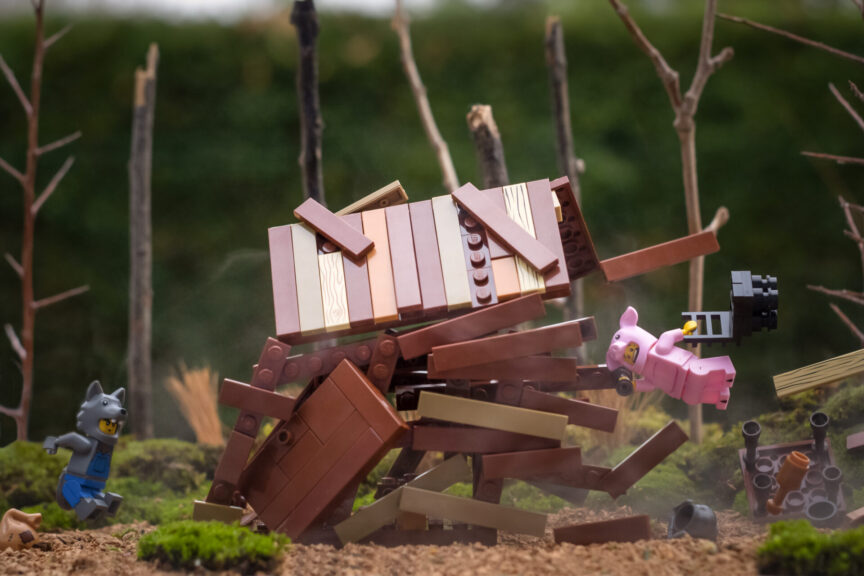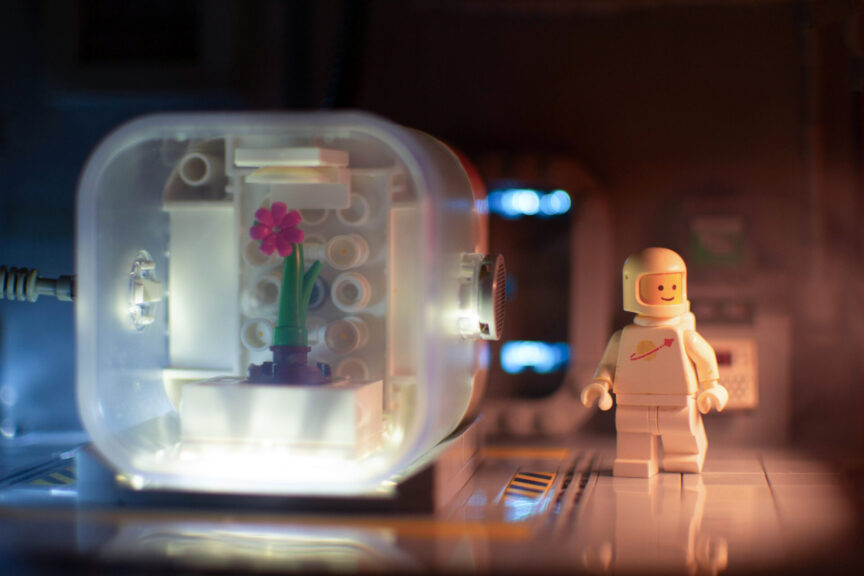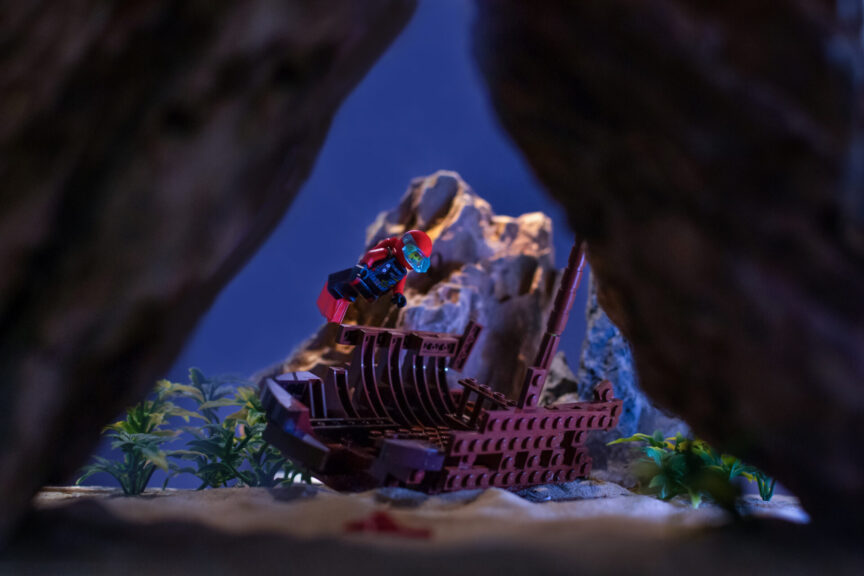In photography and especially in our favorite hobby, toy photography, it is important to photograph to tell a story so that your photo has an impact on the viewer. This is called narrative photography.
Narrative photography is the art of telling stories through images. Good photos capture the audience’s interest, but narrative photos also capture their imagination, immersing them in the story that is being told.
Here I will present to you four tips allowing you to work in this direction.
The framework

In this photo that I took some time ago representing a scene from the 3 little pigs, the setting is just as important as the scene itself to reinforce the story, detail it, and make it more credible so that it captures the imagination of the viewer. For this, I used a wide shot and I created a setting.
To make the decor, I used flocking for modeling to make the ground as well as moss blocks and pieces of wood found on the beach. For the trees I used licorice sticks which look great.




The visual
It is sometimes interesting to move in this direction, to limit information, and to reduce visual distractions. This way you can focus the viewer’s attention on what you want to tell.

A photograph with a backlit subject, as in my example, or a close-up photograph with very strong bokeh in the background, are 2 methods that allow you to limit visual distractions while capturing the audience’s interest.
You thus capture the observer’s gaze in a single place, the one you have chosen to tell your story. The emptiness around it can intensify the message or create a break. You guide your audience towards questioning, towards the development of an idea, an opinion, or a story.
Colors

The colors you use have a big influence on the photographic narrative. They can evoke a range of emotions and create emotional responses in the viewer.
For example, warm tones like red and orange can evoke feelings of passion, energy, or warmth while cool tones like blue and green can create an atmosphere of calm and coolness. Bright, saturated colors can give a feeling of excitement and liveliness, while soft, pastel colors can give a feeling of softness and tranquility. By intentionally using colors to evoke specific emotions, you can enrich your photographic story.
In this photo, I used colors to create a powerful visual narrative. In the center of the scene we have a green plant; green symbolizes life and hope. To the left of the stage, I placed white lighting which symbolizes scientific exploration and purity with a reminder of the astronaut’s suit.
On the right, the use of orange lighting brings a warm, reassuring side. But it can also bring a nostalgic side like a call to a memory.
Composition
Composition is a fundamental part of storytelling, as it guides the viewer’s gaze through the image, highlighting certain aspects and downplaying others. Effective composition can help communicate the main idea of your story, emphasize important elements, and create an emotional connection with the viewer.
Composition can be used to organize the story the image tells. For example, you can use leading lines to have the viewer view the photo in a specific order, thus following the correct flow of the scene.

In this example, I wanted to highlight the discovery of the wreck by the diver. In an underwater setting, you may have a multitude of objects or visual distractions.
To make the decor credible we will add plants, rocks, and even fish. To focus the viewer’s gaze on what I want to tell, I used rocks to form a cave which serves as a natural frame deliberately directing your view.
I lit the scene from above to provide ambient lighting but mainly added side lighting projected directly onto the diver’s face to guide your attention toward him. You will naturally look at it at first and then navigate the rest of the photo, and thus create your own story.

One Comment Add yours